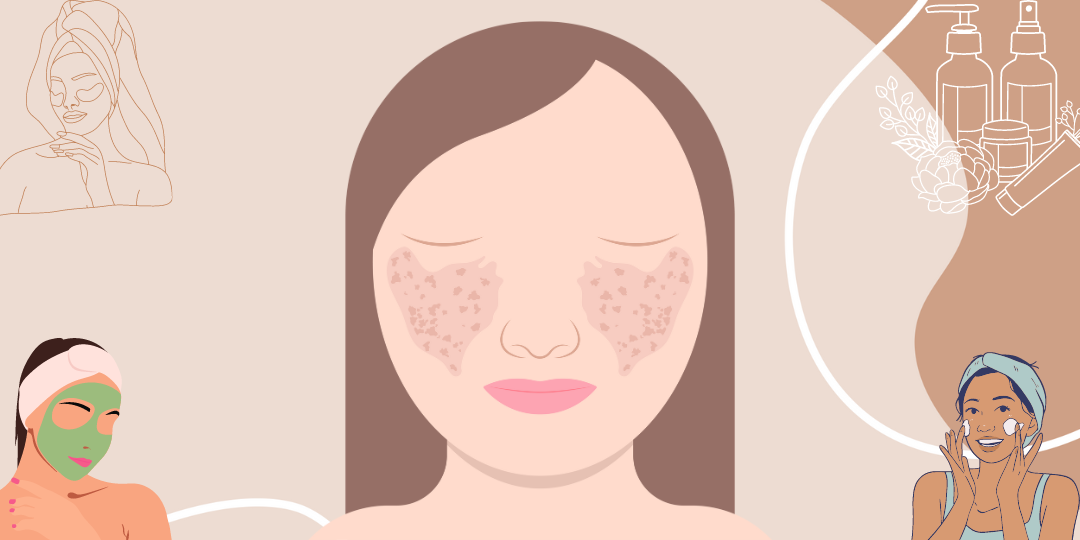Skin Blog
Natural Approaches to Fading Melasma Discoloration
Dark patches on the skin, known as melasma, are a widespread dermatological issue that predominantly affects women. This condition is typically linked to factors such as excessive sun exposure, hormonal fluctuations, and genetic predisposition. In this article, we'll delve deep into the root causes of melasma and present a range of effective, natural strategies to minimize its visibility on the skin.
,
By Elena Bradford
15/10/2024 - Updated 2 hours ago

What is Melasma?
Did you know about melasma? It's a fascinating skin phenomenon that results in darker patches, typically appearing on facial areas. This condition has a particular affinity for women, often making its debut during pregnancy or when hormonal birth control methods are in use. But fear not! I'm here to shed light on this intriguing dermatological issue and share some nature-inspired strategies to help you tackle it effectively.
Causes of Melasma
The Melanin Mystery
Ever wondered about the science behind those enigmatic dark patches? It all boils down to melanin, the pigment responsible for your skin's unique hue. Melasma occurs when your skin decides to go into melanin overdrive, producing an abundance of this color-giving compound in specific areas. This pigment party can be sparked by a variety of factors, ranging from basking in the sun's rays to the body's internal hormonal dance, and even your genetic blueprint or certain beauty products you might be using.
Sunlight: The Silent Trigger
Imagine sunlight as a DJ for your skin cells. When UV rays hit your skin, they crank up the volume, encouraging melanin-producing cells to work overtime. That's why shielding your skin from the sun's enthusiastic influence is crucial in managing melasma.
The Hormonal Rollercoaster
Your body's hormonal fluctuations can be quite the troublemakers when it comes to melasma. Whether you're embarking on the journey of pregnancy or using hormonal birth control, these changes can set the stage for melasma's appearance. Remember, if you're experiencing this, you're part of a large, understanding community.
The Family Connection
Have you noticed a family trend when it comes to melasma? There might be a reason for that. Melasma can sometimes be a family heirloom of sorts, passed down through your genetic code. Being aware of this potential predisposition can help you stay one step ahead in your skincare game.

Nature's Palette: Gentle Remedies for Fading Melasma Marks
1. Embrace the Sun Shield Ritual
First and foremost, let's talk about your skin's best friend: sun protection. Think of sunscreen as your daily armor against melasma's worst enemy - UV rays. Even on overcast days, slather on a broad-spectrum sunscreen with SPF 30 or higher. Set a reminder to reapply every two hours when you're out and about. And why not accessorize? Wide-brimmed hats and chic sunglasses aren't just fashion statements; they're your skin's bodyguards!
2. Aloe Vera: Nature's Soothing Balm
Have you befriended the aloe vera plant yet? This green wonder is a skincare superhero. Its gel is packed with soothing and regenerative powers. Try this: gently massage fresh aloe gel onto your melasma spots, let it work its magic for 20 minutes, then rinse. Make this your daily skin treat.
3. Apple Cider Vinegar: The Tangy Lightener
Don't let its strong smell fool you - apple cider vinegar can be a skin game-changer. Its secret weapon? Acetic acid, a natural skin lightener. Create a gentle toner by mixing one part vinegar with three parts water. Apply this elixir to your spots with a cotton ball, let it sit briefly, then rinse. Start with a patch test and, if all's well, make it a daily habit.
4. Papaya: The Tropical Skin Renewer
Fancy a fruity facial? Papaya isn't just delicious; it's a skin renewal powerhouse. Mash up some ripe papaya and treat your face to a mask. Let it work for 15-20 minutes before rinsing. For best results, indulge in this tropical treat twice a week.
5. Rosehip Oil: The Nourishing Nectar
Meet rosehip oil, your skin's new best friend. Rich in fatty acids and vitamins, it's like a superfood for your skin. Apply a few drops to your melasma spots twice daily, morning and night, and let it work its regenerative magic.
6. Feast for Your Face
Your diet isn't just fuel for your body; it's nourishment for your skin too. Load up on antioxidant-rich foods like berries, nuts, seeds, and leafy greens. Think of them as your internal skincare team, fighting free radicals and boosting skin health from the inside out.
7. Hydration Station
Keep your skin quenched! Hydration is key in your melasma management plan. Pamper your skin with natural moisturizers like shea butter or coconut oil. And don't forget to hydrate from within - make water your beverage of choice throughout the day. Establish a twice-daily moisturizing routine, morning and night, right after cleansing.

Final Considerations
Remember, patience is key when dealing with melasma. These natural approaches can take time to show results, but they're gentle on your skin and can lead to long-term improvements. Always listen to your skin and consult with a dermatologist if you have any concerns.
Need More Specific Guidance?
If you’d like more personalized advice and detailed guidance on treating melasma spots, feel free to reach out to us on WhatsApp. Click the link below to chat with our skincare expert and get the help you need!